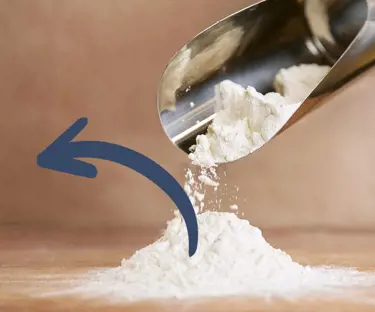From the gym to centre stage
I still find it amazing how protein supplements, for example, went from being pretty much the sole property of gym fanatics 15 to 20 years ago to the situation today, where protein has become a nutrient that’s of keen interest to the general population.
The trend is, in part, driven by the fact that protein is a relatively simple concept for consumers to understand. It is associated with natural nutrition, and most people are quick to connect protein to dairy products – which are a readily accessible and easy-to-understand source. In recent years, consumers around the world – from Europe to China – have begun to connect a wider range of benefits to protein, ranging from looking after their weight, to having a better body tone, to looking good and even getting an energy boost.
Our research found that around 30% to 35% of people actively choose what they consider to be healthier products when shopping. Protein is on the radar of the most health-motivated consumers, and a key lesson of the last five years is that most of them are willing to pay more for healthier products, with high-protein yoghurts, for example, achieving 100%-200% price premiums to “regular” yoghurts in many markets.
Halo effect
The protein trend, like most trends in the consumer world, is helped along not just by its real health benefits, but also by the opportunities it presents for investors and food manufacturers. In particular, plant-based protein benefits from its relatively new appeal and its appearance in creative and fresh new products and health. A constant barrage of PR from plant-based protein producers, for example, is helping to grow the entire protein market, although this brings with it the promotion of vegetable proteins as being on par with, or better than dairy proteins – a standpoint which isn’t backed by science.
The trend isn’t just limited to a few specific countries, or just to the US or Europe, for example. In Australia, awareness of protein’s benefits is growing quickly and, although it has not yet translated into US-style market growth, our monitoring of online media in the country places ‘high-protein diet’ as one of the most discussed issues in consumer forums and search requests. We can see, too, that the number of media articles revolving around weight loss and dietary protein (linking the two) has more than doubled from 2012 to 2017.
Whey better?
Plant-based protein sources may be capturing a big share of the limelight, but whey protein still reigns supreme as the best-documented, most-sold protein. And there are many reasons for its continued success.
One aspect is that whey can help to produce better-tasting products. And that’s something that can’t be underestimated. Products that deliver on taste have created major market successes in the past decade. Take, for example, the amazing speed with which Greek yogurt was taken up by consumers in the US – with whey protein as the key to its full, indulgent eating experience.
Then there’s skyr – the Icelandic-inspired yogurt that is even starting to make itself felt in China. Inspired by recent successes such as Siggi’s, we expect to see an avalanche of high-protein skyr products hitting the supermarket cooling cabinets.
More cheese
Cheese, a product category that had its share of negative publicity about fat and sodium in past decades is also a good source of protein. Scientific concerns about sodium and content, still strong in the minds of older consumers, have been swept aside by good-quality research published in leading journals. And this research has fuelled positive attention online and boosted the health credentials of cheese among younger consumers.
Hard cheeses, in particular, are making a comeback on the health front, with some US brands communicating the protein content of their products and connecting cheese to another key trend: on-the-go convenience. Product developers are creating single-serve cheese snacks that combine cheese with nuts and fruits. Products like these enable people to eat virtuously in snack form. That’s something that has strong appeal to younger audiences. Some of the most successful products have been these type of snacks, with strong sales in convenience and city-centre outlets (where younger consumers are more likely to shop) at high margins.
Permission to indulge
More and more ice cream manufacturers have their new product development teams working on delivering guilt-free, protein-enriched and reduced-sugar products, many of them inspired by the success in the US of Halotop, a high protein ice cream brand that came from nowhere to a $100 million dollar business in the space of three years.
Including more protein in the diet is also right in line with the Paleo and Keto diet movements. Here, we see people picking up the parts of these diets they feel they can incorporate in their lives, and including more protein is one of the simpler, more pleasurable choices.
What’s next?
So what do we see coming for protein in 2018? I like to say that trends in this industry move the way the tide comes in. You can see things subtly starting to move, but it takes time before the real impact is felt. With protein, we’re still a way off that point, but our feet are rapidly getting wetter – and both manufacturers and consumers are well aware of the way things are going.
Expect to see higher protein content in everything from yogurts to snacks, beverages and desserts.
This blog contains material and information intended for B2B customers, suppliers and distributors, and is not intended as information to the final consumers.


